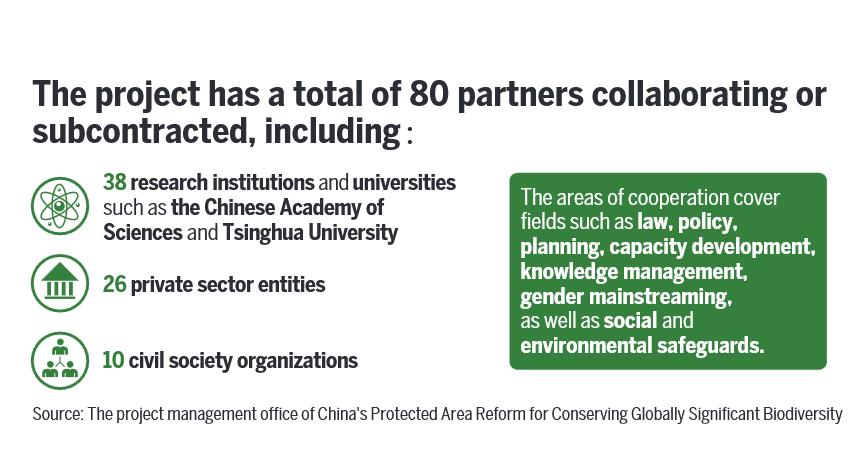
After six years of implementation, China's Protected Area Reform for Conserving Globally Significant Biodiversity (C-PAR1) recalls the lessons it has learned and related experience can be replicated and promoted across China and even the world.
Oversight
Since the project started in 2019, it has organized six steering committee meetings of the C-PAR1 project, with the participation of representatives from eight project steering committee member units.
The meetings reviewed project progress reports and deliberated on major issues and activities. C-PAR1 National Project Director Li Yonghong, who is also the director general of the Foreign Environmental Cooperation Center of the Ministry of Ecology and Environment, provided comprehensive guidance and oversight on project implementation and management, and Chief Technical Advisor Wang Yi offered strategic guidance and technical oversight. Despite a three-year pandemic shortly after project's inception, it was completed without any delays and all indicators and activities were completed smoothly and were of high quality.
Recommendations
The project constantly monitored the research dynamics of international and domestic national parks and protected areas. It focused on the reform requirements of China's national park system, leveraging the Global Environment Facility's project design to carry out researches and activities. The project management office reported project progress and achievements to relevant supervisory departments such as the Ministry of Ecology and Environment and the National Forestry and Grassland Administration and generated high-quality policy recommendations for submission to the supervisory departments. These measures supported the key work of the supervisory departments.
Collaboration
Strictly adhering to open tendering and procurement, the project selected domestic and international high-quality institutions and experts to ensure efficient project outcomes. The project has collaborated with or subcontracted 80 partners, including 38 research institutions and universities such as Tsinghua University; 26 private sector entities; and 10 civil society organizations.
The collaboration spanned various fields such as law, policy, planning, capacity development, knowledge management, and social and environmental guarantees. The research and practical levels were led by experts and scholars such as Lyu Zhongmei, Wang Yi and Su Yang. These partners helped the project deliver high-quality research results, providing crucial technical support for the construction and management of national parks and protected areas in China.
The project had a stable management team with the experienced Dr. Wang Aihua as project manager. The project management office and pilot implementation office staff are proficient in applying adaptive management requirements, taking measures to control risks, and ensured that project outputs could serve the latest developments and actual needs. They adhered to the procurement, financial and social security management requirements of organizations such as the Ministry of Finance and the Global Environment Facility.
Regular capacity building and training activities were conducted; innovative project management systems were established; and a set of project management tools was developed. These measures ensured that project implementation and management were scientific and efficient.
The project summarized and outlined its achievements and promoted them through multiple platforms to boost global influence. It has completed over 200 reports and produced about 40 publications. The project has organized side events at global platforms such as the 15th and 16th Conference of the Parties to the UN Convention on Biological Diversity and other nationally important platforms.